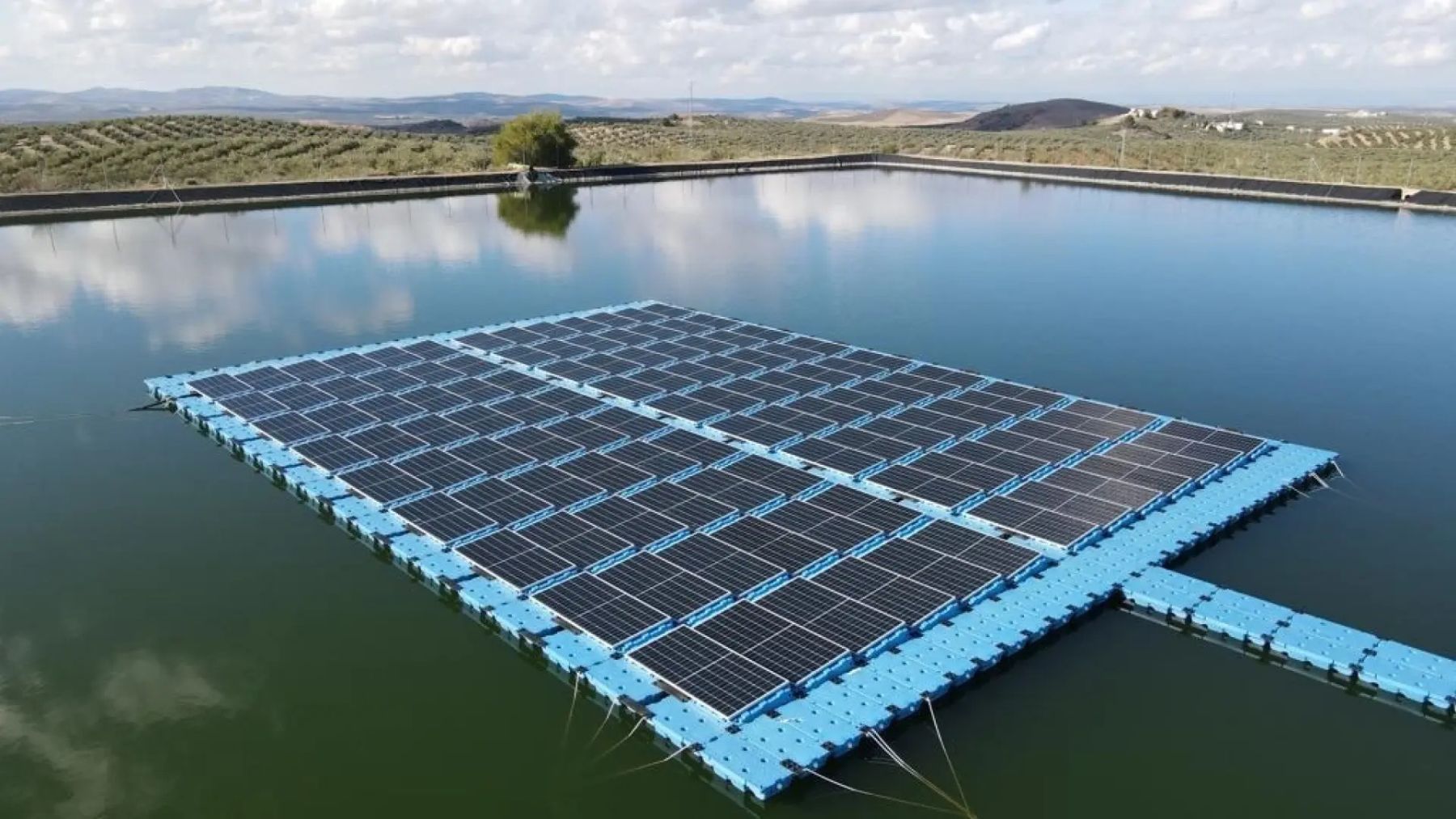Spain wants to produce energy with water and has begun to cover it up. A panorama that is just as impressive as this floating megastructure that keeps the world in suspense. Spain records many cases of Spanish cities where agriculture and livestock farming have become the prelude to embracing new ways of making a living. One of them is tourism and the other is renewable energy. Fields previously intended for cultivation are now the scene of large wind or photovoltaic parks.
Under these circumstances, two opposite situations arise. On the one hand, heirs who have lost their roots accept the economic offer of large corporations to change the fate of their country, while on the other hand there are those who are attached to space and resist giving up its essence .
This situation no longer only applies to countries in remote areas. Now it also reaches the cities. The reservoirs and swamps have become a tourist and recreational asset.

Spain will use its water to produce energy: this is the government’s roadmap
Last July the Council of Ministersat the suggestion of the Ministry for the Ecological Transition and the Demographic Challenge (MITECO)approved the Royal decree supervisor of floating solar panels in reservoirs in the public domain.
These floating photovoltaic installations will provide multiple environmental benefits energy generation. This achieves higher performance through water cooling and dust reduction.

Evaporation and algae growth will also decrease due to the shadow of the plates on the water surface. In addition, they will prevent the change in terrain caused by installations on dry land.
In Spainone hundred reservoirs in the public domain will benefit from the use of floating solar power plants. In concrete terms, 106 locations could house these energy-creating facilities: river basins Guadiana (28), Guadalquivir (24), Tajo (20), Ebro (18), Júcar (6), Segura (5), Duero (3) and Miño-Sil (1).
However, the implementation of floating solar panels will only be able to ‘penetrate’ between 5 and 15% of the reservoir surface. This will be adjusted depending on the trophic state of the reservoir. That is, the worse the quality of the water, the greater the coverage will be.
It should be noted that these installations are prohibited in non-artificial and protected basins, lagoons or bodies of water. Another condition of the concession is that it is temporary, with a maximum term of 25 years.
Spain turns to water to generate energy: a production in the public domain
The process will start at the request of one party or through a public tender by the basin organization. When you have the rights to access and connect to the electricity network and the General State Administration has jurisdiction in the field of hydraulic engineering and energy, the concession of the public hydraulic domain and the prior administrative consent will be processed and granted simultaneously, according to a process that regulates a ministerial decision.
Portugal, Germany, India, China and Singapore They are already betting on projects involving floating solar panels in various reservoirs and hydraulic areas. The company SUD Renewable energy sources was part of the first installation of a floating solar power plant in Cataloniawhich was carried out in March 2023.
The installation was carried out in the Riera de Gaia, Tarragona. 195 solar panels have been installed on a 1,745 m² rainwater collection pond, owned by the company. Athensspecialized in agricultural biotechnology.
The estimated production capacity of this plant corresponds to 139,920 kWh/year. A capacity equal to the consumption of 43 homes.
Spain wants to produce energy with waterso it has started covering it with solar panels. The fuss about floating solar panels has even reached the Swiss Alps, which woke up under the solar panels.

